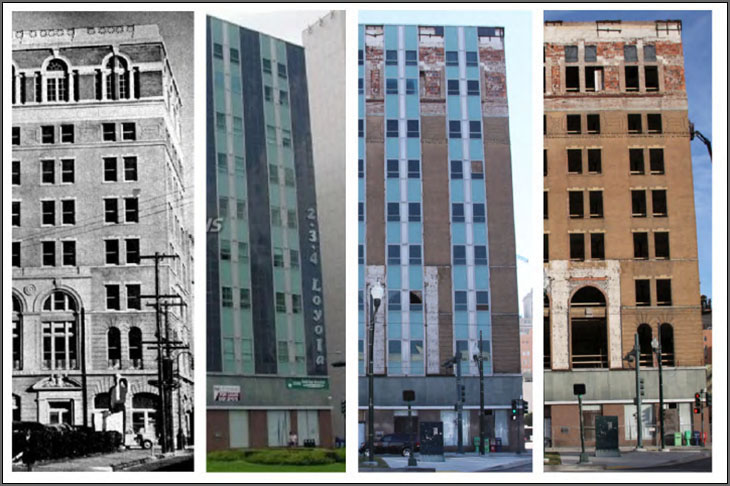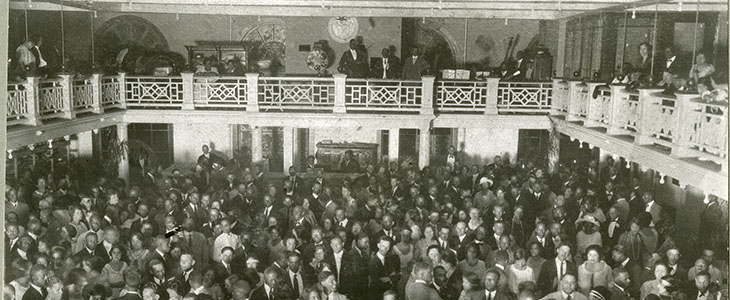Historic Pythian building to make a grand return

The Pythian building, 234 Loyola Ave. in downtown New Orleans, has undergone many changes in its 107-year history. This timeline shows its exterior in the 1920s at far left; with metal coverings from the 1960s that gave it a “modern” look; and its current look, far right, with the slipcovers removed. It will be returned to its original look in the new renovation project. (Photo from studioWTA)
Developer Will Bradshaw of Green Coast Enterprises, who also is an adjunct lecturer at the Tulane University School of Architecture, was looking for just the right historic property to redevelop in downtown New Orleans. While touring the 10-story building at 234 Loyola Ave., he entered its third level, once a theater, and was transfixed.
“It was filled with light from floor-to-ceiling brick windows, with a great view of downtown, and I said, "Oh wait, this is where we need to be."”
It took many months of planning, architectural work by two Tulane alumni and research by several Tulane archives, but the 107-year-old Pythian building what Bradshaw describes as “probably the most significant building for African American people in the state of Louisiana” is about to be reborn.
The Pythian is looking downtrodden right now but that"s temporary. When the $4.8 million purchase was completed last October by Green Coast, in conjunction with the Crescent City Community Land Trust, crews stripped off sheets of aluminum from the building"s exterior that had been added in the 1960s to give it a “modern” look.
Underneath the slipcover, “every bit of intricate stone work on the exterior was smashed,” Bradshaw says.
His architects, Tulane alumni Wayne Troyer and Julie Babin of studioWTA, provide the good news: “We"re bringing it all back,” including ornate details around the windows, the neo-classical entry and Grecian key ornaments.
Construction will start this summer, and by late 2016 or early 2017, the “new” Pythian will offer 69 residential units, most at full market rental rates and but a portion earmarked as affordable housing for lower-income workers.
The first three floors in the redevelopment will be a mixture of retail and office space, with the first level becoming a “public market food hall” that Bradshaw describes as an area to showcase New Orleans food culture.
“We feel really lucky to be involved in this project,” he says.

When it was built in 1908 by S. W. Green to house offices for an African American fraternal order, the Pythian Temple, as it was called, also had a rooftop garden for jazz concerts. In 1923 a roof was added over the dance floor. A large crowd celebrated its opening night In August 1923, dancing to music by Manuel Perez, Johnny St. Cyr, Mercedes Gorman, Willie Humphrey, Henry Kimball and Joe Wynn. (Photo from the Johnny St. Cyr Collection, Hogan Jazz Archive, Howard-Tilton Memorial Library)
I never had the opportunity to be involved with building with such monumental and far-reaching impact.—Will Bradshaw, president, Green Coast Enterprises
